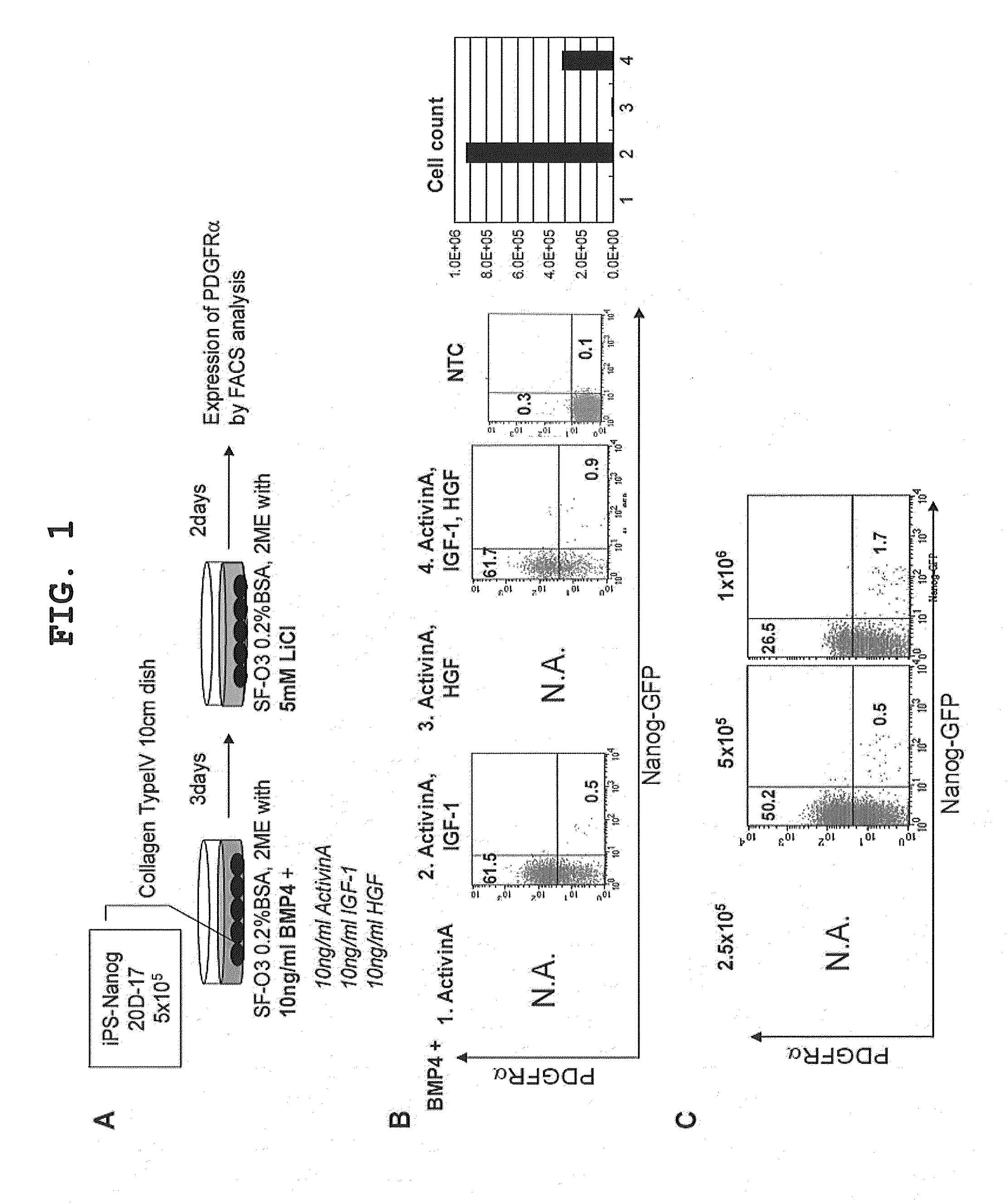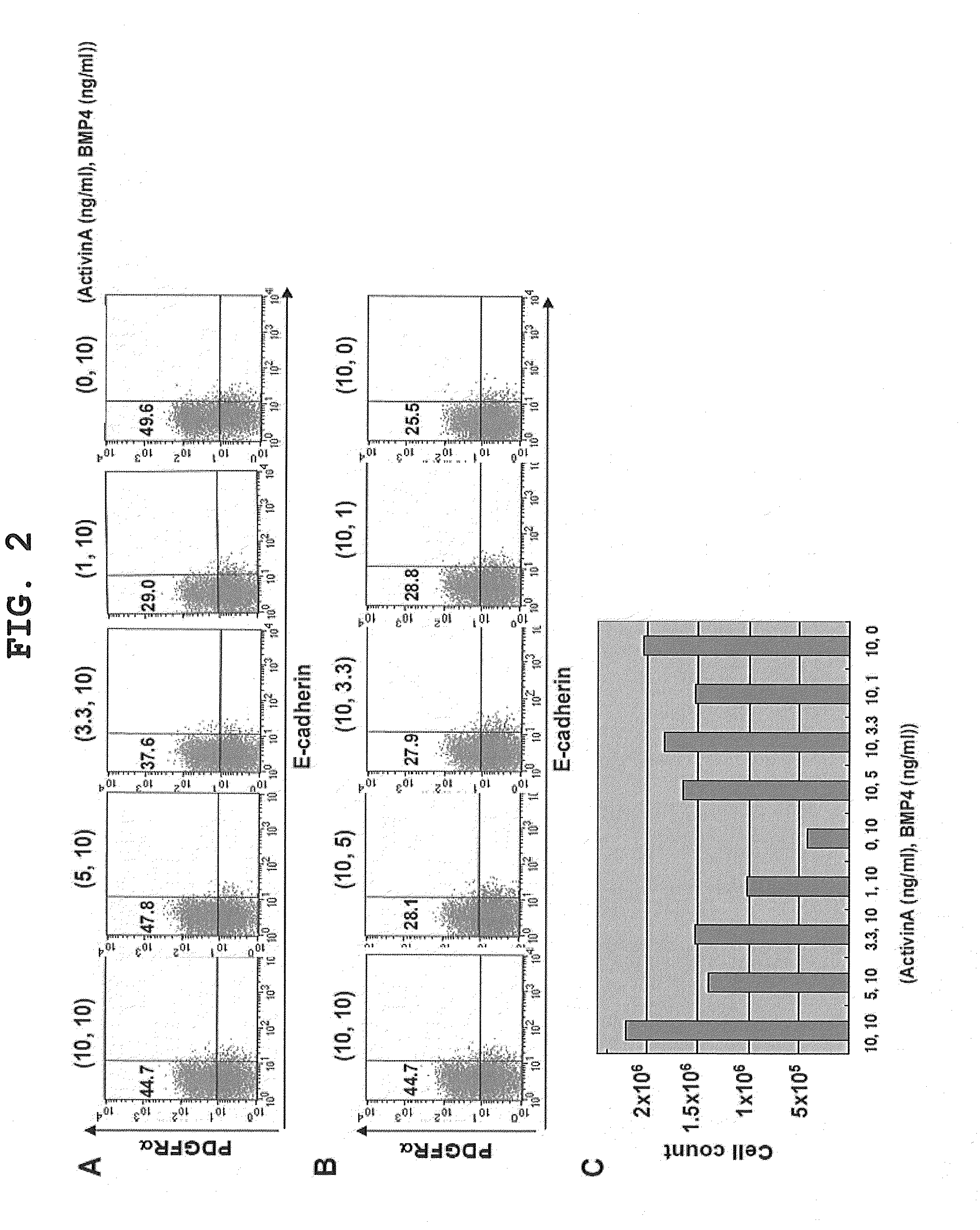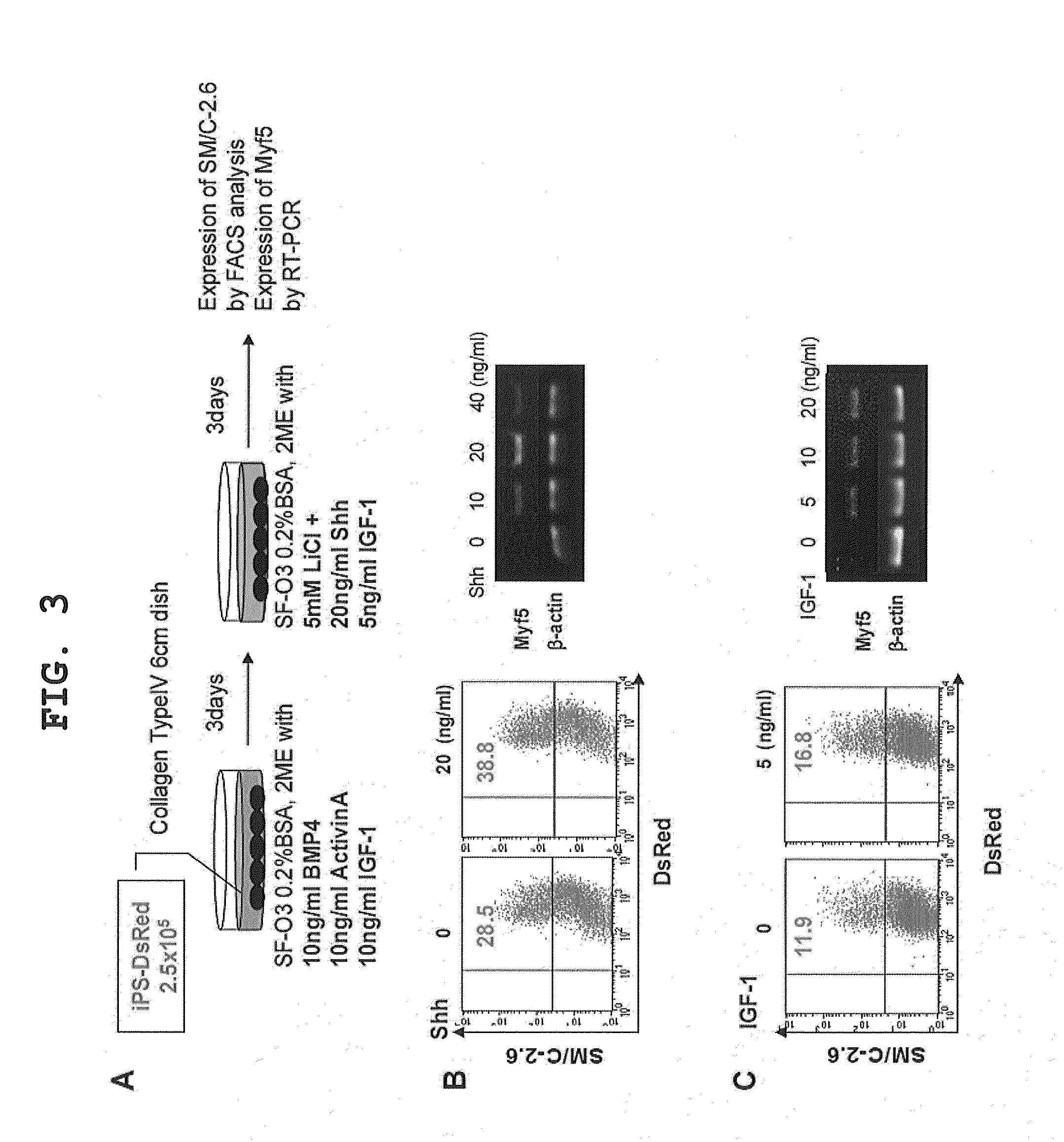Method of inducing differentiation from pluripotent stem cells to skeletal muscle progenitor cells
a technology of pluripotent stem cells and differentiation methods, applied in the direction of skeletal/connective tissue cells, drug compositions, muscular disorders, etc., can solve the problems of inability to immediately apply human clinical practice, inability to use patient's own bone marrow, and inability to proliferate infinitely, so as to achieve stable supply of skeletal muscle progenitor cells, inducing differentiation, and efficient
- Summary
- Abstract
- Description
- Claims
- Application Information
AI Technical Summary
Benefits of technology
Problems solved by technology
Method used
Image
Examples
example 1
Induction of Differentiation from iPS Cells to Primitive Streak Mesodermal Cells
[0112]An attempt was made to induce the differentiation of iPS-Nanog-20D-17, iPS-DsRed and Plasmid-iPS by the method of serum-free differentiation induction using BMP4 and LiCl established in a study using mouse ES cells (Japanese Patent Application No. 2008-186348; the method indicated by bald letters in FIG. 1A), but no cells survived. With this in mind, a first experiment was performed to determine whether the addition of growth factors other than BMP4 supports the survival of iPS cells and promotes their differentiation into primitive streak mesodermal cells (hereinafter sometimes simply referred to as “mesoderm”). Activin A, IGF-1, and HGF were examined as growth factor candidates (FIG. 1A, italicized). With Activin A added to all culture conditions examined, 4 conditions were analyzed: “neither IGF-1 nor HGF was added”, “IGF-1 was added alone”, “HGF was added alone”, and “both were added”. The iPS ...
example 2
Influences of BMP4 and Activin A Concentrations in Induction of Differentiation from iPS Cells to Primitive Streak mesodermal cells
[0114]The influences of the concentrations of BMP4 and Activin A in the induction of differentiation from iPS cells to primitive streak mesodermal cells were examined. Specifically, of the addition conditions of Activin A 10 ng / ml, BMP4 10 ng / ml, and IGF-1 10 ng / ml determined in the previous section, the concentration of Activin A alone (FIG. 2A) or BMP4 alone (FIG. 2B) was changed, and the expression of PDGFRα was evaluated by FACS.
[0115]Analysis of the influence of Activin A concentration showed that the percentage of PDGFRα-positive cells induced exceeded 40% at concentrations of 5 ng / ml or more, but the percentage decreased dose-dependently at lower concentrations. In the absence of Activin A, the percentage was 49.6%, demonstrating high induction efficiency. However, comparing the viable cell counts obtained, the highest viable cell count was obtain...
example 3
Induction of Differentiation from Primitive Streak Mesodermal Cells Derived from iPS Cells to Skeletal Muscle Progenitor Cells
[0118]Although the results described in the previous section demonstrated that three factors consisting of Activin A, BMP4, and IGF-1 were essential in the differentiation from iPS cells to primitive streak mesodermal cells (during the first 3 days), the factor that promotes the differentiation from primitive streak mesodermal cells to skeletal muscle progenitor cells (during the last 3 days) remained unidentified. To find a method for effectively inducing the differentiation, the present inventors investigated the potential of the Wnt signal inducer LiCl, used alone or in combination with other growth factors, for inducing the differentiation of iPS cells into skeletal muscle progenitor cells. Selected growth factor candidates, i.e., Sonic Hedgehog (Shh) and IGF-1, were added to the differentiation medium for the last 3 days, and their influences on differen...
PUM
 Login to View More
Login to View More Abstract
Description
Claims
Application Information
 Login to View More
Login to View More - R&D
- Intellectual Property
- Life Sciences
- Materials
- Tech Scout
- Unparalleled Data Quality
- Higher Quality Content
- 60% Fewer Hallucinations
Browse by: Latest US Patents, China's latest patents, Technical Efficacy Thesaurus, Application Domain, Technology Topic, Popular Technical Reports.
© 2025 PatSnap. All rights reserved.Legal|Privacy policy|Modern Slavery Act Transparency Statement|Sitemap|About US| Contact US: help@patsnap.com



